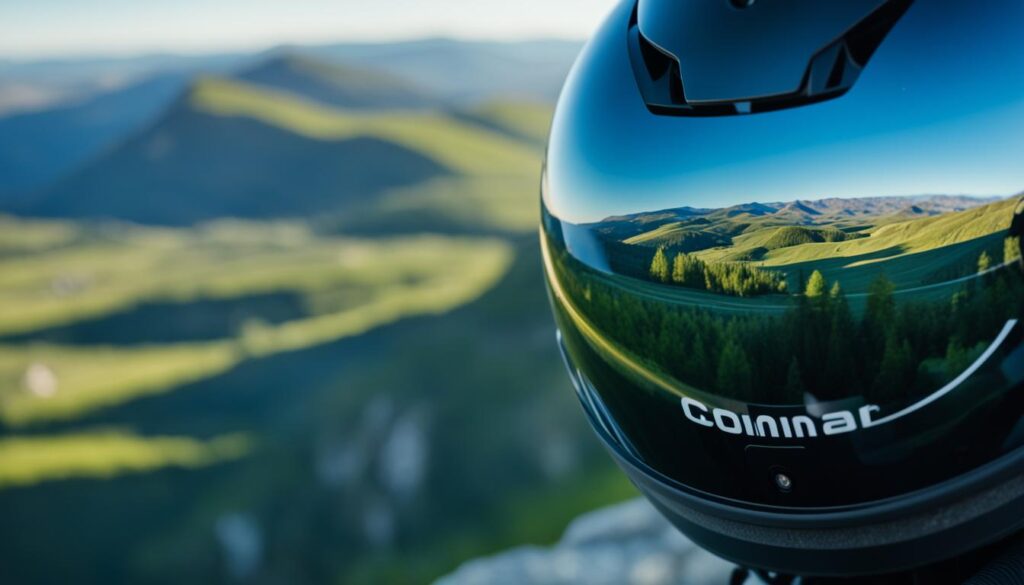
Are you curious about which resolution and frame rate are best for capturing action-packed moments with your helmet camera? Do you want to understand how different resolutions and frame rates impact the quality of your footage? Look no further!
In this comprehensive guide, we will dive into the world of helmet camera resolutions and frame rates, demystifying the technical jargon and equipping you with the knowledge to make informed decisions. Whether you’re an adrenaline junkie looking to capture your extreme sports adventures or a filmmaker aiming for cinematic shots, understanding the intricacies of resolutions and frame rates is crucial.
Let’s explore the different resolutions available for helmet cameras and unravel the mystery behind frame rates, enabling you to take your action footage to the next level.
Key Takeaways
- There are various resolutions available, such as 5K, Ultra HD (4K), Full HD (1080p), and HD Ready (720p).
- Higher resolutions offer more detail and allow for zooming and cropping in post-editing.
- Frame rate refers to the number of video frames captured per second and affects the smoothness of motion.
- Different frame rates, like 24fps, 30fps, and 60fps, have unique characteristics and are suitable for various situations.
- Choosing the right resolution and frame rate depends on the purpose of your recordings and the desired outcome.
Choosing the Right Resolution
When it comes to selecting the right resolution for your helmet camera, it’s important to consider the purpose of your recordings and the intended use of the footage. Understanding the different resolution options available will help you make informed decisions and capture the best possible visuals.
Higher resolutions, such as 5K or 4K, offer incredible detail and clarity, allowing you to capture every moment with precision. However, it’s essential to keep in mind that these higher resolutions result in larger file sizes, which may be a consideration depending on your storage capacity and editing capabilities.
For most applications, Full HD (1080p) is a widely accepted resolution that provides excellent image quality and compatibility with various devices, including TVs and monitors. It strikes a balance between detail and file size, making it a popular choice for many helmet camera users.
If file size is a concern or you’re using an older camera, HD Ready (720p) resolution may be sufficient. While offering a lower level of detail compared to Full HD, it still delivers clear visuals that are compatible with HD screens.
When comparing different helmet cameras, take a closer look at the resolution options available. Consider your specific needs and prioritize the balance between image quality and file size to find the resolution that best suits your requirements.
| Resolution | Quality | File Size |
|---|---|---|
| 5K | High | Larger |
| 4K | High | Larger |
| Full HD (1080p) | Excellent | Moderate |
| HD Ready (720p) | Good | Smaller |
Understanding Frame Rates
In the world of video recording, frame rate plays a crucial role in determining the quality and smoothness of the footage. Frame rate refers to the number of video frames captured per second, and it has a significant impact on the final result.
One of the most commonly used frame rates in the cinematic industry is 24fps (frames per second). This frame rate is often referred to as the standard for cinema as it provides a natural and cinematic look to the footage. The 24fps frame rate is ideal for capturing dramatic and storytelling scenes, giving movies their distinct visual aesthetic.
On the other hand, 30fps is the traditional frame rate for TV broadcasts and is often used in live-action situations. This frame rate offers smooth motion and is well-suited for capturing events like news broadcasts, interviews, and documentaries.
When it comes to capturing fast-action footage, such as sports or dynamic events, a higher frame rate like 60fps is commonly used. The 60fps frame rate ensures smooth and detailed footage, effectively capturing the quick movements and actions without any motion blur.
For those seeking to create captivating slow-motion effects, higher frame rates like 120fps or 240fps can be employed. These frame rates allow for dramatic slow-motion playback, emphasizing the smallest details and extending the duration of the captured moments.
Understanding frame rates is essential for maximizing the video quality and capturing the intended motion in helmet camera recordings. By choosing the appropriate frame rate based on the content and purpose of your videos, you can ensure that your footage visually communicates the desired story or action.
Importance of Frame Rate in Helmet Cameras
Higher frame rates result in smoother motion and offer a more immersive viewing experience.
When recording high-speed activities or capturing fast-paced action, using a higher frame rate becomes crucial. A helmet camera with a high frame rate ensures that every movement is captured with precision and clarity. This is particularly beneficial for sports enthusiasts, adventure seekers, and professionals who rely on helmet cameras to document their activities.
Whether it’s capturing a skiing adventure down a steep slope or showcasing a high-speed bike ride, a higher frame rate allows the viewer to experience the action vividly and feel like they are right in the midst of it. The smoothness in the motion minimizes any visual disturbances or blurs, resulting in a more enjoyable and immersive viewing experience.
Furthermore, when working with slow-motion effects, a higher frame rate provides more frames to stretch and manipulate during post-production. This flexibility allows for better control over the final look and feel of the slow-motion sequence, enabling content creators to craft visually stunning and captivating footage.
In summary, the frame rate plays a critical role in video quality, impacting the overall viewing experience and the ability to capture fast-paced activities accurately. When choosing a helmet camera, consider the available frame rates and select a model that offers the desired frame rate capabilities based on your recording needs.
Choosing the Best Frame Rate
When it comes to capturing the best helmet camera videos, choosing the right frame rate is crucial. The frame rate directly impacts the quality and smoothness of your footage, so it’s essential to consider the content and purpose of your videos when making this decision.
24fps is a popular frame rate that provides a cinematic look and is suitable for most types of footage. This frame rate delivers a smooth and natural motion that is pleasing to the eye.
30fps is a versatile frame rate that works well for various situations. It is commonly used for interviews, cinematic shots, and scenes with normal motion. Choosing 30fps ensures that your videos have a balanced and fluid movement.
60fps is ideal for capturing fast-action situations, such as sports or high-energy activities. This higher frame rate allows for smooth and detailed footage, ensuring that you don’t miss any crucial moments.
For those looking to add dramatic slow-motion effects during editing, higher frame rates like 120fps or 240fps are the way to go. These frame rates enable you to slow down the action and create visually stunning slow-motion sequences.
To determine the best frame rate for your helmet camera videos, it’s crucial to test different options. Experiment with various frame rates, and see which one achieves the desired look and feel for your videos. Keep in mind the content you are capturing, whether it’s slow or fast-moving, and select a frame rate that complements it.
Remember, the frame rate you choose will impact the overall quality and viewing experience of your videos. So take the time to find the perfect balance that showcases your footage in the best possible way.
Conclusion
Understanding the different resolutions and frame rates for helmet camera videos is crucial for capturing clear and smooth action footage. When choosing the best resolution, consider the purpose of your recordings and the available options. Higher resolutions like 5K and Ultra HD (4K) offer more detail, allowing for zooming and cropping in post-editing with minimal loss of quality. However, keep in mind that higher resolutions result in larger file sizes.
When it comes to frame rates, the decision depends on the content and intended use of your videos. Frame rates like 24fps provide a cinematic look and are suitable for most types of footage. For fast action situations, such as sports, go for a higher frame rate like 60fps to ensure smooth and detailed motion. If you want to achieve super slow motion effects during editing, consider using even higher frame rates like 120fps or 240fps.
To find the best resolution and frame rate combination for your helmet camera, testing different settings is key. Compare the results and consider how they align with the desired look and feel of your videos. Ultimately, choosing the resolution and frame rate that best suits your needs and the intended use of your footage will ensure optimal video quality for your helmet camera videos.
Source Links
- https://www.singletracks.com/mtb-gear/mountain-bike-helmet-camera-buyers-guide/
- https://blaremedia.net/choosing-video-resolution-frame-rates/
- https://www.coolblue.nl/en/advice/image-resolution-and-frame-rates.html

Meet James Smith, affectionately known by friends as ‘Biker Smith’, your go-to expert at ‘Best HD Helmet Camera’. At 35, living in the USA, James embodies the spirit of adventure. His life is a thrilling ride, powered by his Harley Davidson Softail and BMW S 1000 RR, with his girlfriend as his favorite travel companion. A software developer by profession, James’s heart beats for the open road, making him a full-time traveler at heart. His passion for biking and technology merges seamlessly on this platform. Recognizing a gap in discussions around helmet cameras, he founded this blog to educate and inspire fellow enthusiasts. His mission? To elevate your riding experience with the best HD helmet camera insights, backed by firsthand experiences, rigorous testing, and a genuine love for the ride. Trust James to guide you through the world of helmet cameras, where quality, innovation, and safety ride together.